september 1st, 2012
Sung Kug Kim
Bi-King, 2010


– Artist unknown
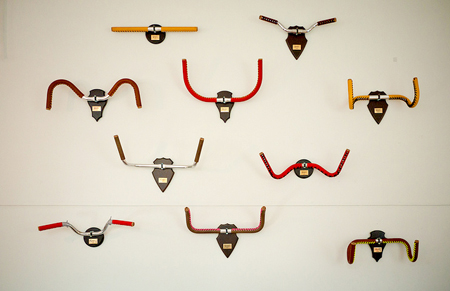
– Artist very known
Pablo Picasso
Bull’s Head, 1942
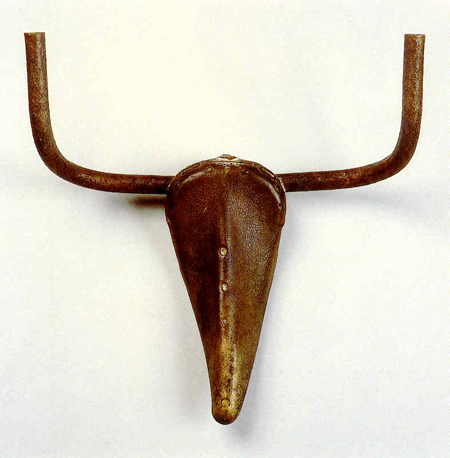
The first readymade was made by Marcel Duchamp in 1913. In his Paris studio he mounted a bicycle wheel upside down onto a stool, spinning it occasionally just to watch it. “I enjoyed looking at it,” he said. “Just as I enjoy looking at the flames dancing in the fireplace.” According to André Breton and Paul Éluard’s Dictionnaire abrégé du Surréalisme, a readymade is “an ordinary object elevated to the dignity of a work of art by the mere choice of an artist.”
Most of his early readymades have been lost or discarded, but years later he commissioned reproductions of many of them…..
Marcel Duchamp
Bicycle Wheel (Roue de bicyclette), 1913

Posted in Taxonomy, Visual Arts, Zoology | Reacties uitgeschakeld voor Readymade Made Already?
oktober 27th, 2011
Leonid Tsvetkov

Remnants of our digital discoveries are being dumped worldwide by the millions. After stripping off some valuable metal parts, the left overs are worthless. So called ‘Motherboards’, the main circuit board of a computer have a short life expectancy since new chips are developed with singularitarian speed*. When exposed to a variety of chemical liquids they become alive again. Never before I’ve seen so much beauty in discarded trash. Oil refineries and skyscrapers surround city grids which are overrun by unknown fungi and bacteria. The Russian artist Leonid Tsvetkov creates landscapes which could become ours in a not so distant future, or as he describes it himself: ‘My work focuses on reshaping cultural waste and exploration of social and physical processes. I am interested in the moments where the hard edge geometry of the city becomes organic or there random activity begins to take a highly organized form’.
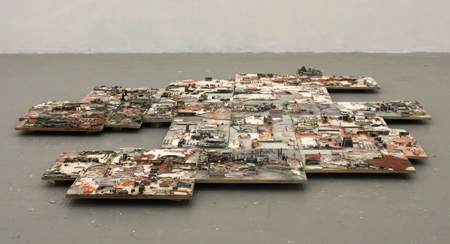
(*) Technological singularity refers to the hypothetical future emergence of greater-than-human intelligence through technological means. Since the capabilities of such an intelligence would be difficult for an unaided human mind to comprehend, the occurrence of a technological singularity is seen as an intellectual event horizon, beyond which the future becomes difficult to understand or predict. Nevertheless, proponents of the singularity typically anticipate such an event to precede an “intelligence explosion”, wherein superintelligences design successive generations of increasingly powerful minds. The term was coined by science fiction writer Vernor Vinge, who argues that artificial intelligence, human biological enhancement or brain-computer interfaces could be possible causes of the singularity. The concept is popularized by futurists like Ray Kurzweil and it is expected by proponents to occur around 2045.
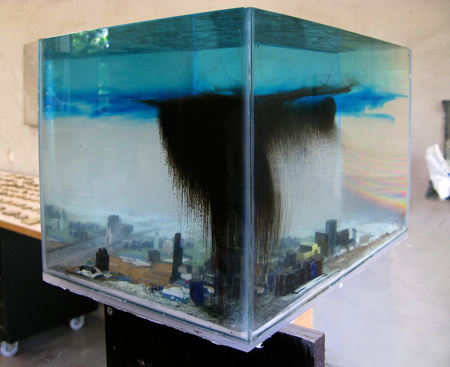
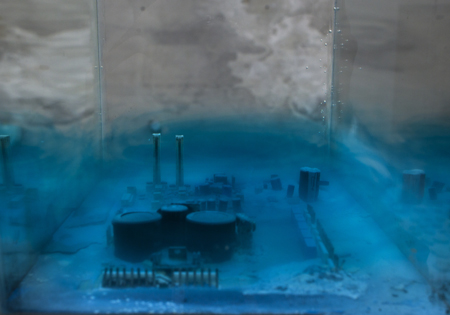
Posted in Ecology, Geography, Philosophy, Sociology, Visual Arts | Reacties uitgeschakeld voor Digital Doomsday
september 10th, 2011
Roger Hiorns
Seizure, 2008
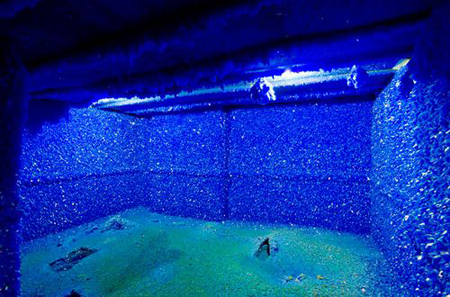
In his latest installation, “Seizure”, British artist Roger Hiorns has turned the idea of sculpture inside out. Rather than present a sculpture inside an architectural space, he’s turned every surface of the architectural space into sculpture. Mixing installation art and chemistry, he’s taken an entire abandoned apartment near London’s Elephant & Castle and transformed it into a gemstone. Covering the inside with blue copper sulphate crystals, he’s created an other-worldly, mineralized, glinting mirror of an everyday apartment. Jewels literally glowing from the ceiling and lining the floors…
The scale and production of “Seizure” is ambitious. After reinforcing the walls and ceiling and covering them in plastic sheeting, 80,000 litres of a copper sulphate solution was poured in from a hole in the ceiling. After a few weeks the temperature of the solution fell and the crystals began to grow. The remaining liquid was pumped back out and sent for special chemical recycling.

‘Caves are the earliest forms of dwelling and crystal caves do occur naturally in the form of salt and gypsum caves,’ Roger Hiorns says. ‘And in a way this project is converting a concrete modernist building into a cave. The work isn’t about architecture but there is that element of architectural reversion about it. Plus I am originally from Birmingham, so, for me, being surrounded by concrete is natural.’
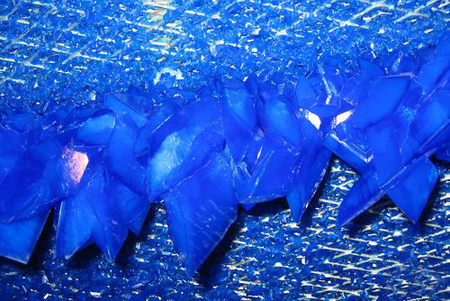
Encased in ice-cooled orange suits, scientists explore the Cave of Crystals, discovered a thousand feet (304 meters) below Naica, Mexico, in 2000.
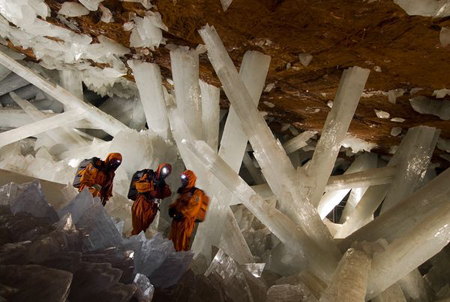
Simon Ruehle
O.T., 2005 (speakers, radio)
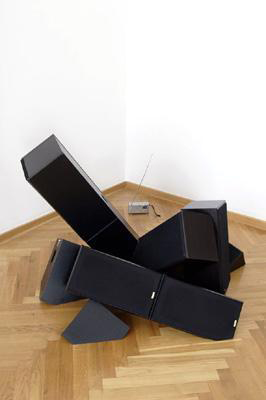
Posted in Geography, Visual Arts | Reacties uitgeschakeld voor Christal Cave













